Steering Rebuild
on the 1982 300CD (W123.153)
by JHZR2
03/12/11
W123 Tie Rods, Drag Links and Idler Arm Rebuild DIY
Another in my set of DIY based upon recent work performed on my 1982 300CD. I had a torn tie rod boot, and some knocking/play in my idler arm, so it all got rebuilt/replaced. This is how it was all done. All of it was quite easy, and is less than a day's work.
Tools needed:
- Impact/lug wrench
- Jack/jackstands
- Pickle fork (optional)
- Tie rod/pitman arm/balljoint separation tools
- Allen wrenches
- Combination wrenches
- Ratchets, 3/8, 1/2 and even 3/4 drive if available
- Adjustable wrench
- Needlenose plier
The first key to the project is to get the car up in the air. Jacking it up and putting it on jackstands is the preferable method. I use a Heavy US-made 2-ton hydraulic jack to lift up the front from under the engine support.

Of course then the wheels must come off. I locked the steering wheel in position so that at least the box and its arm would be correct, thus forcing the idler arm to be correct and hopefuly letting me size the new tie rods in place. More on all that later.
An impact gun always helps to make it easy.



I started from the passenger side just because that was where the torn boot was. It wasnt bad, not rusty or terribly dirty, but was contributing to play on the wheel.
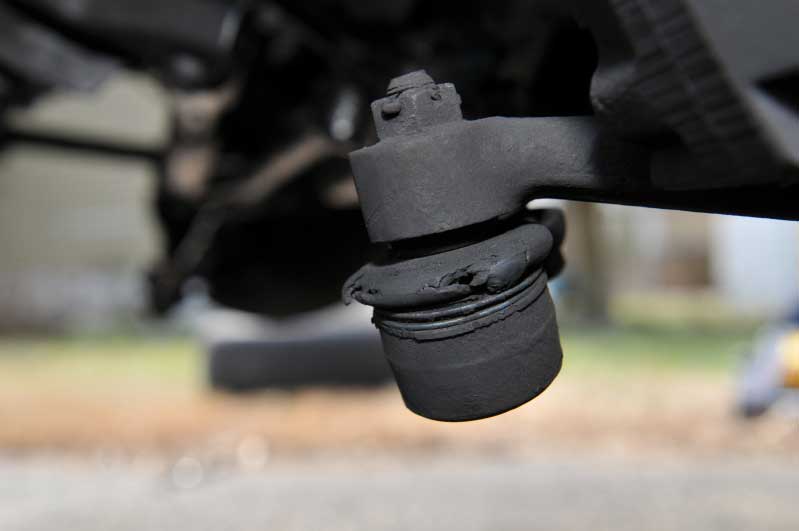
New style tie rod ends utilize a locknut generally, but older ones utilize a castle nut and a cotter pin. I dont know that either is better/worse, but the cotter pin type needs a needlenose. You simply bend the cotter pin and then pull out, after which the nut on the tie rod end balljoints can be loosened and removed.
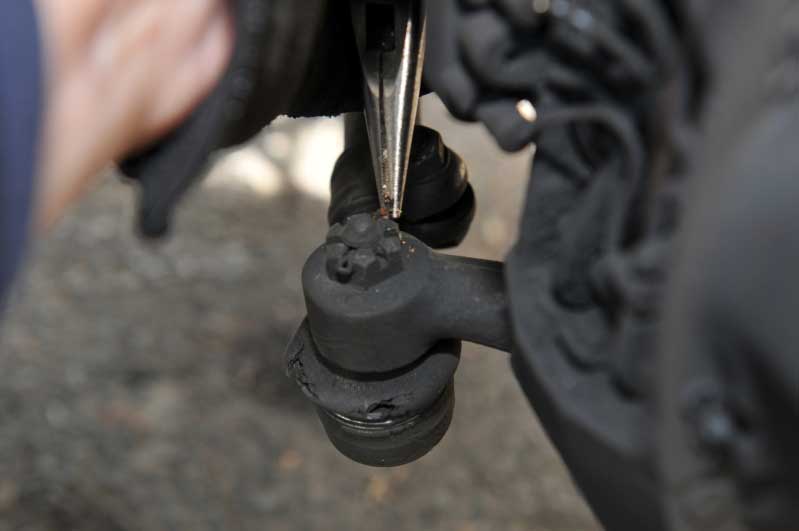

I have a pickle fork, and tried using it, especially since there was nothing to loose on this joint. Hammering it in didnt do much. Maybe if I swung extra hard it would have come out, but I just dont have a good feel for how hard is too hard. Instead I opted for acquiring a set of OTC tools which can be used for popping the joints. The kit I used is OTC-6295, from Amazon. This kit has two main items that are used, an enclosed version of a C-clamp (for lack of better explanation) and a three-point hinged press. You will see both in the following pictures. Each is shown in the true MB part form in the FSM, and you cannot easily get away with just one. Each has its application point depending upon which joint is being separated due to space and accessibility.


After the outer was off, then it was time for the inner. It was easier to bend it to make tool access to the joint more straightforward.



The job continues on with the drag link on the idler arm. Note a few things. The second tool gets used here, and the steering shock also needs to be removed from where it bolts to the body of the car.





At this point the Idler Arm is free, so the separation of its parts can begin. Some discussions recommend removing the air cleaner and loosening it from the top. This did nothing but destroy a 1/2 to 3/8 adapter.


I did everything from underneath, using a 24mm 3/4 drive breaker bar and a similarly sized 1/2" ratchet. A big adjustable also came in handy under certain parts of the effort.



Note the top dirt cap and bottom cover washer with nut.

Then we are at the point where the bearing inserts are friction fit in.

I found it best to use the long bolt at an angle to help pull down the lower bearing/bushing. Using the threaded part slightly inserted allowed for enough grip on the item to help slowly pull it out.

And then drive out the upper one using the same bolt.
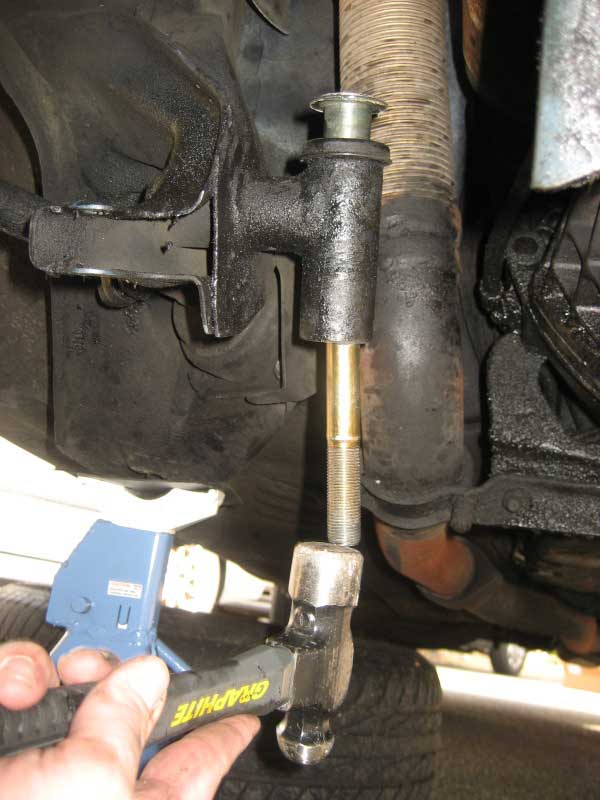
It was a good clean bore inside.

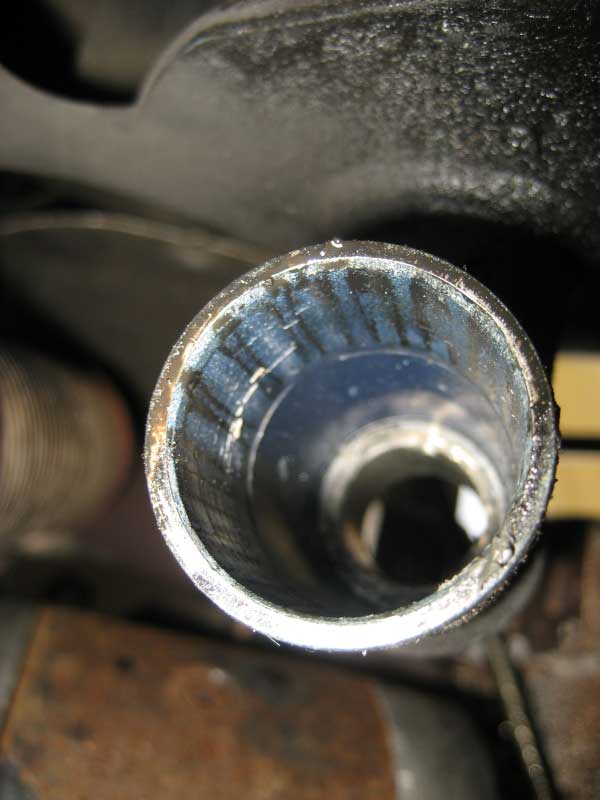
It is important to remember the order of the parts that are together on the idler arm. I put them back together for the photo.
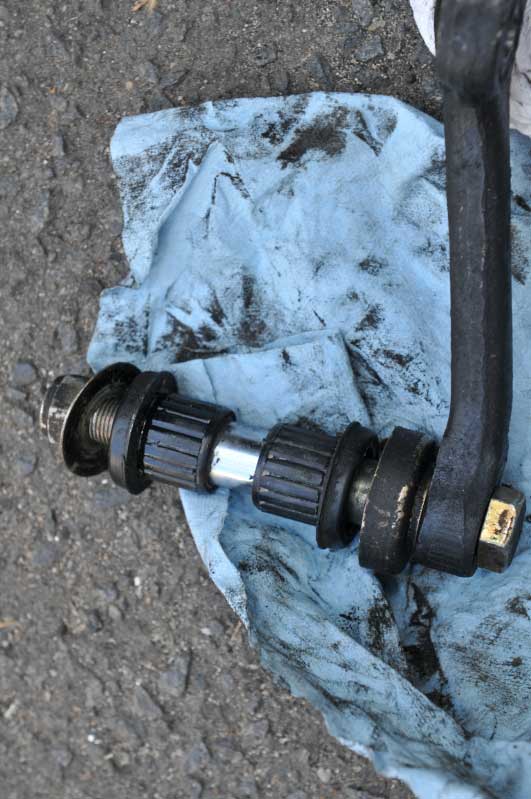

Note the washer that is directly under the arm is not necessarily always installed. It is dependent upon the part number for the specific arm itself. This is laid out in the FSM. Its presence is based upon the number shown in the photo. It is likely a good chance that whatever is on there is right at this point...

The bearing/bushings to be used are slightly larger than the hole for the idler arm.

To do the install, I used a bit of Napa Sil-Glyde on the surfaces to help guide them in.

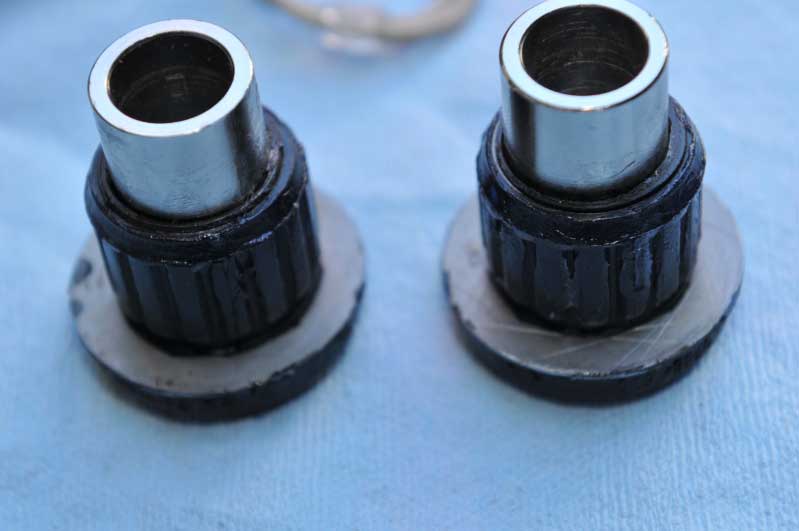
I then utilized the old idler arm bolt, washer and nut to create a tool to help guide the new ones into the bore.
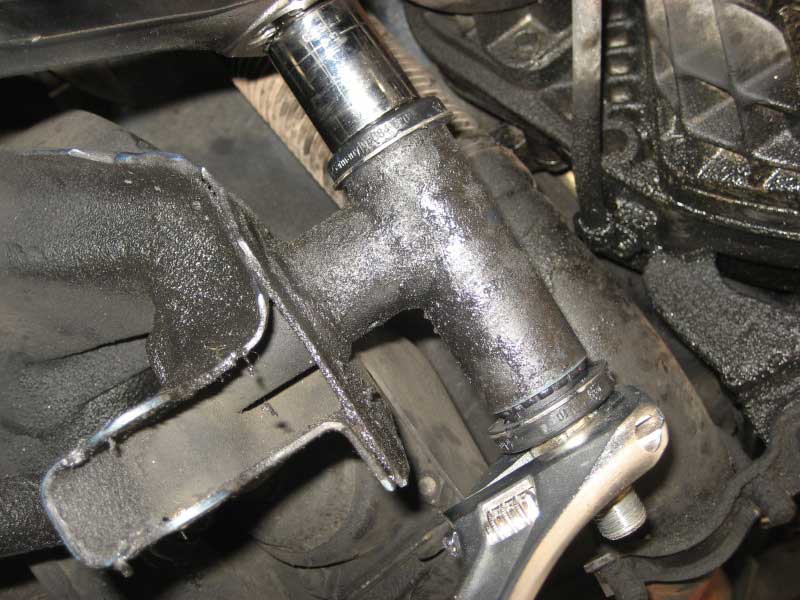

After that, the sandwich of parts can be put back together and torqued appropriately to 88 ft-lb.
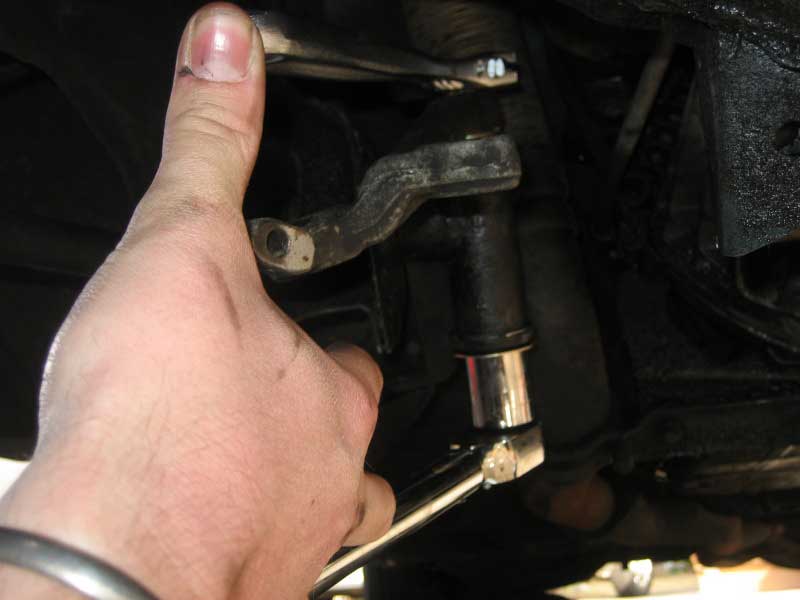
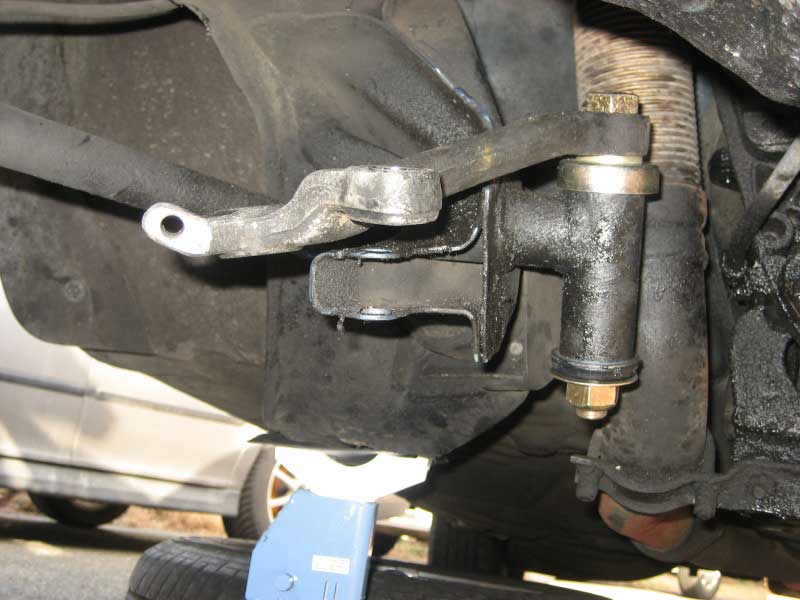
So now that the idler is complete, the other tie rod must come off like the last one.
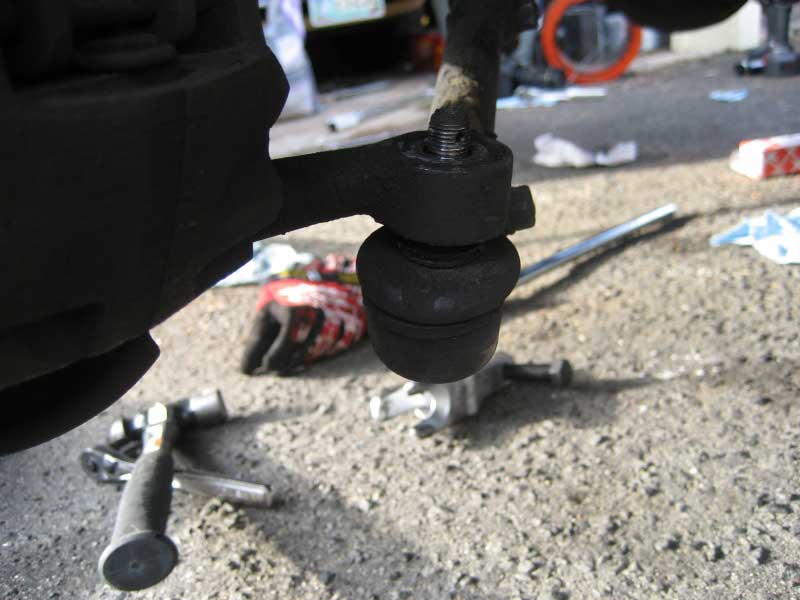
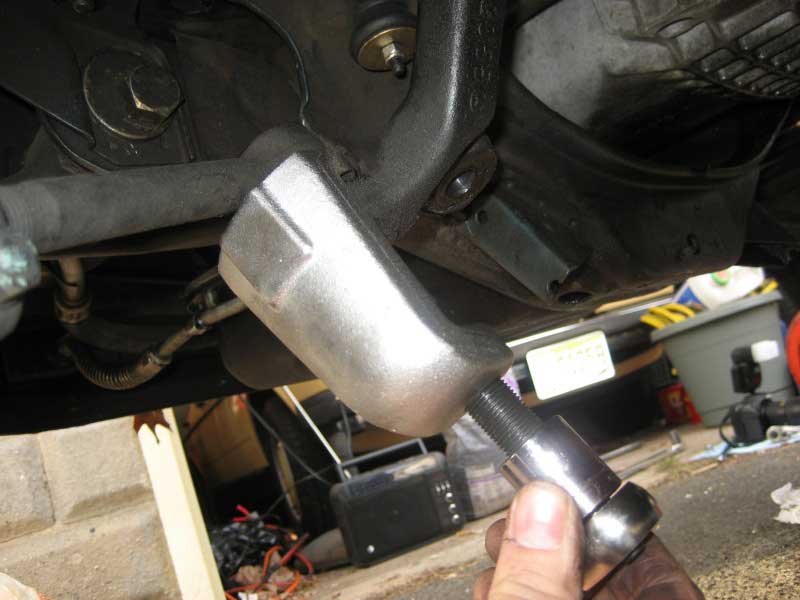
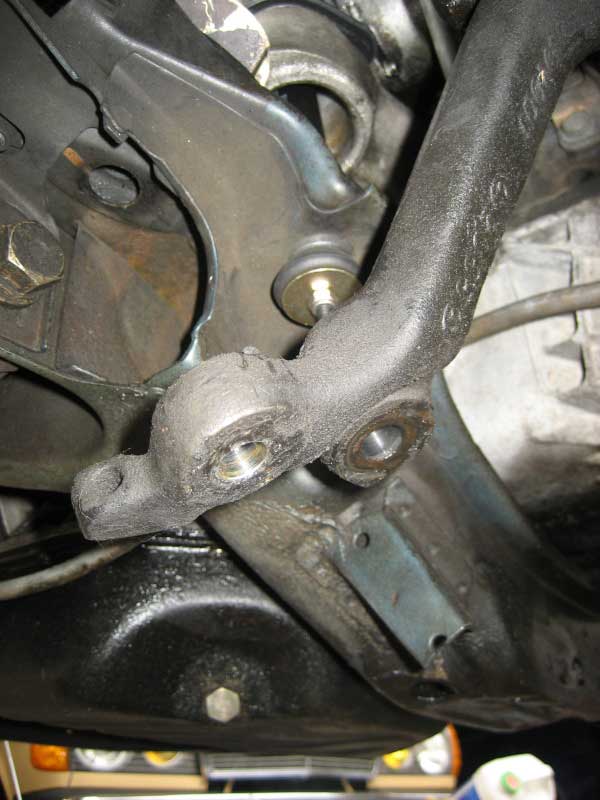
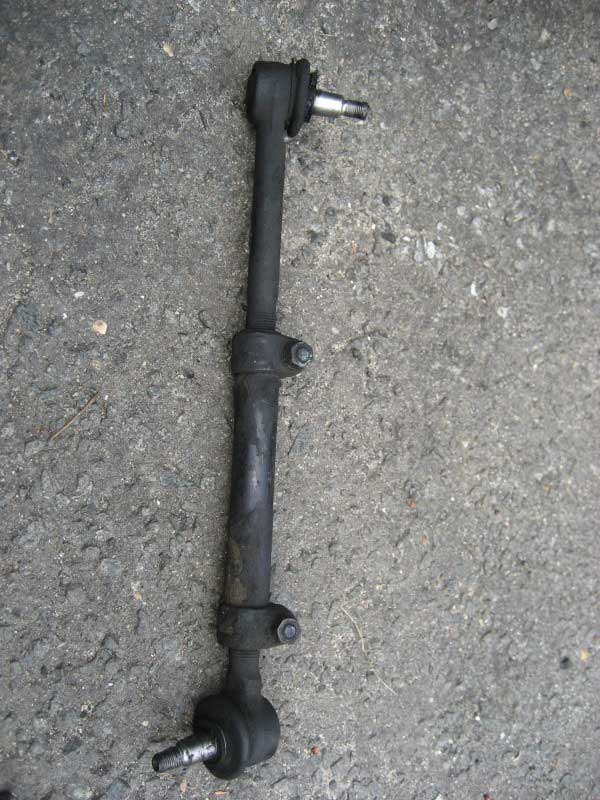
With everything off, now it is time to put it all back together. The drag link is a set length, so it need not be worried about. However the tie rods need to be brought to the new length. I bought mine from Phil, and they seem to be white box made by Karlyn. They are slighly smaller in casting size than the originals.
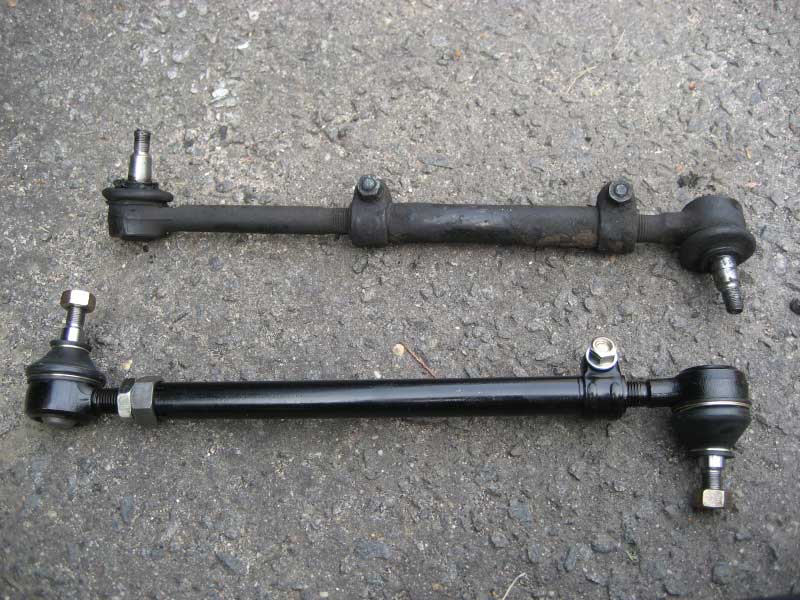
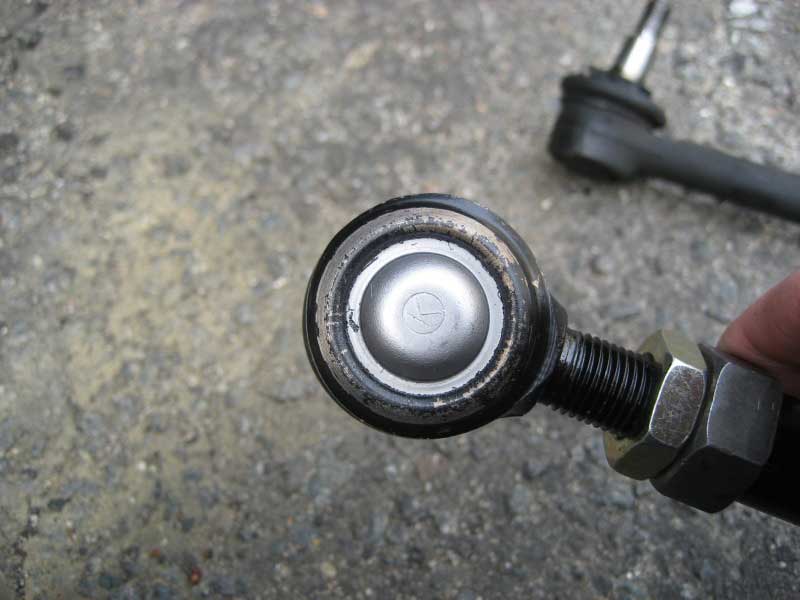
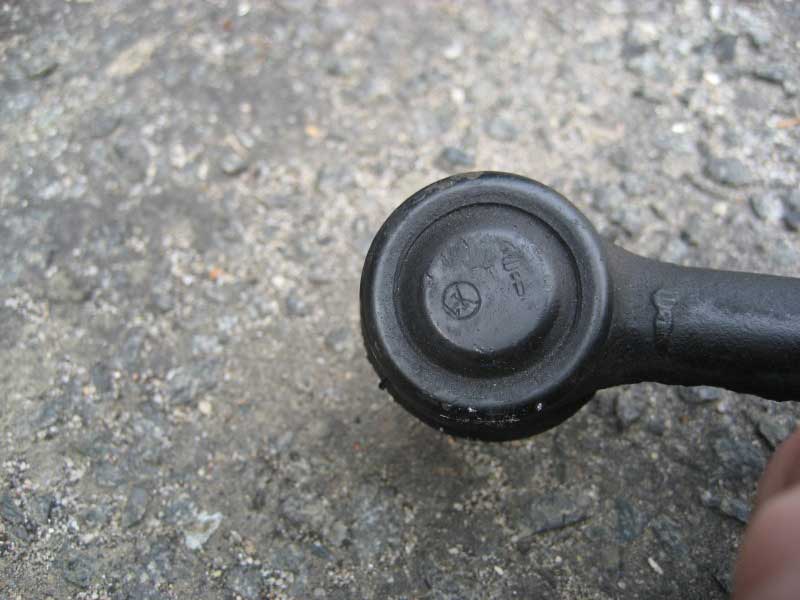
I adjusted the tie rods so that there was visible threads on both ends, and that the overall length was similar to the old ones.
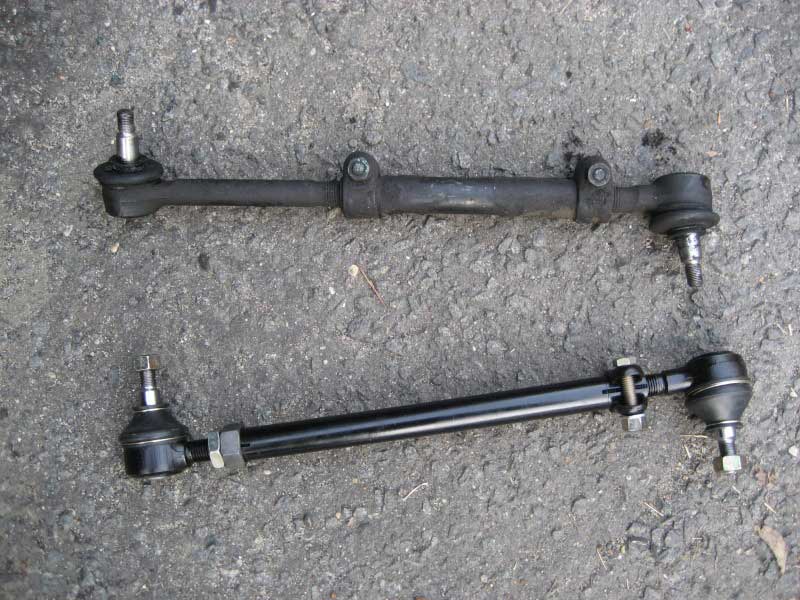
The FSM states that for newer designs, the clamp end goes towards the wheel. For older designs, the longer rod end goes inboard.
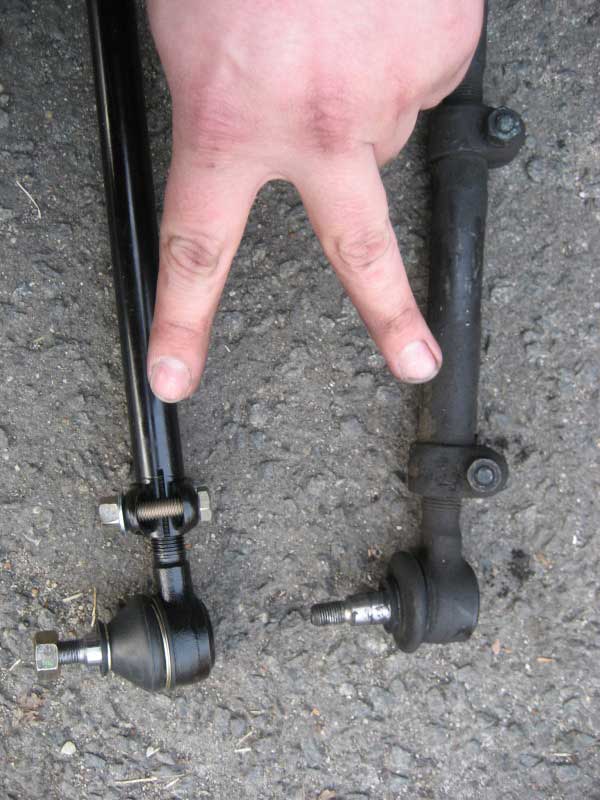
The new style ends and drag link utilize a locknut, and the shaft has an opening in its top such that an allen key can be installed to prevent the shaft from turning.
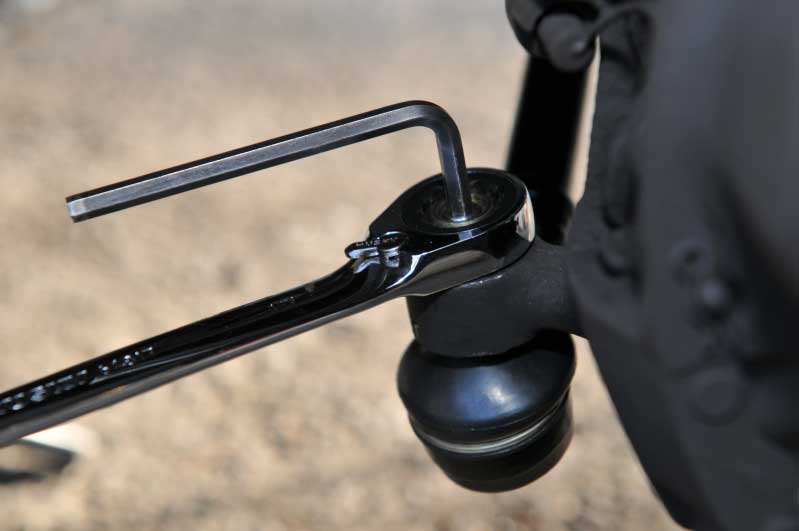
The order of install can go really any way it seems. Don't forget to also tighten in the steering shock damper to the guide rod and the body.
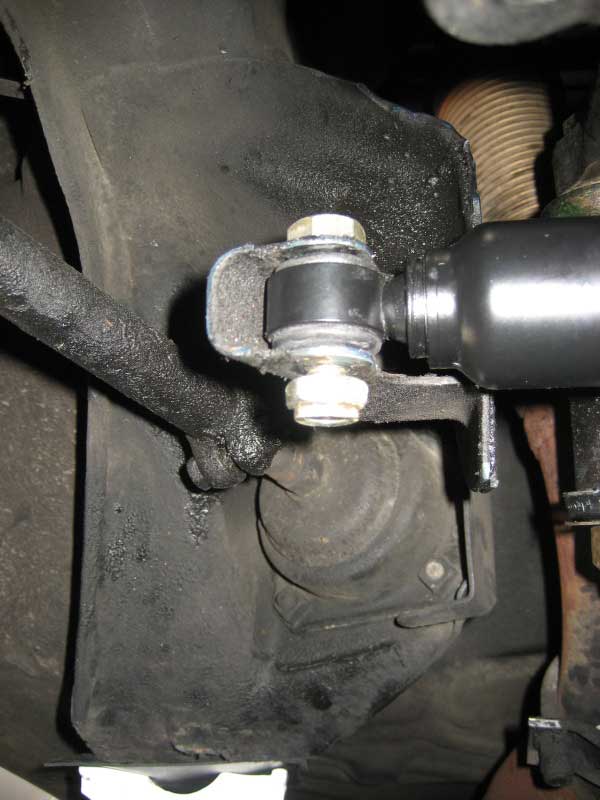

Complete connection and tightening down all tie rod ends.
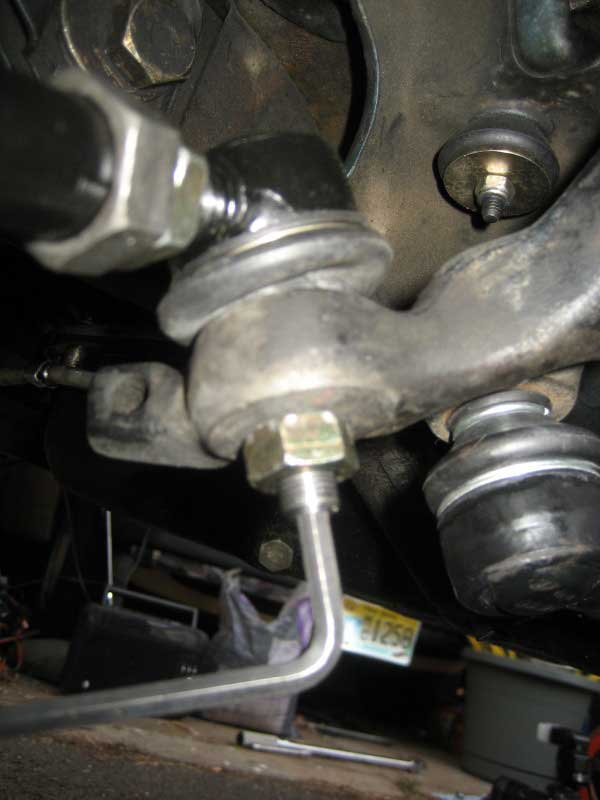
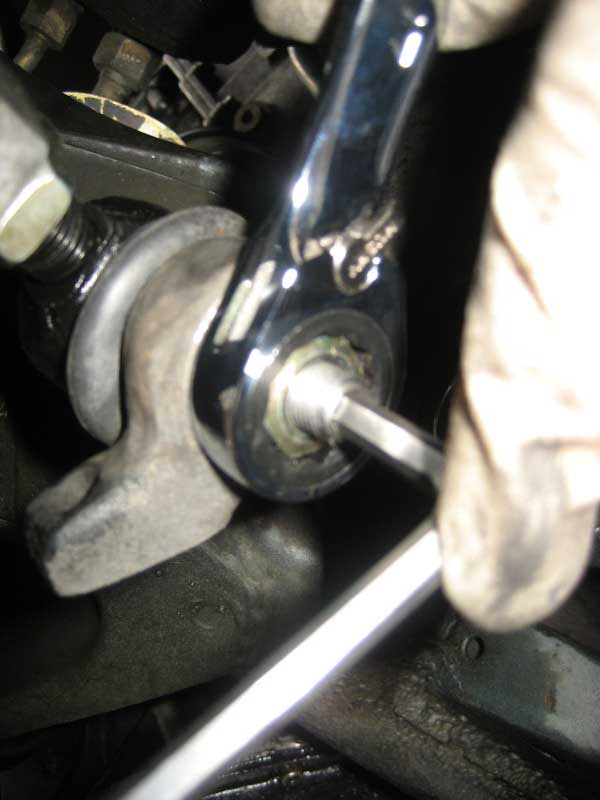
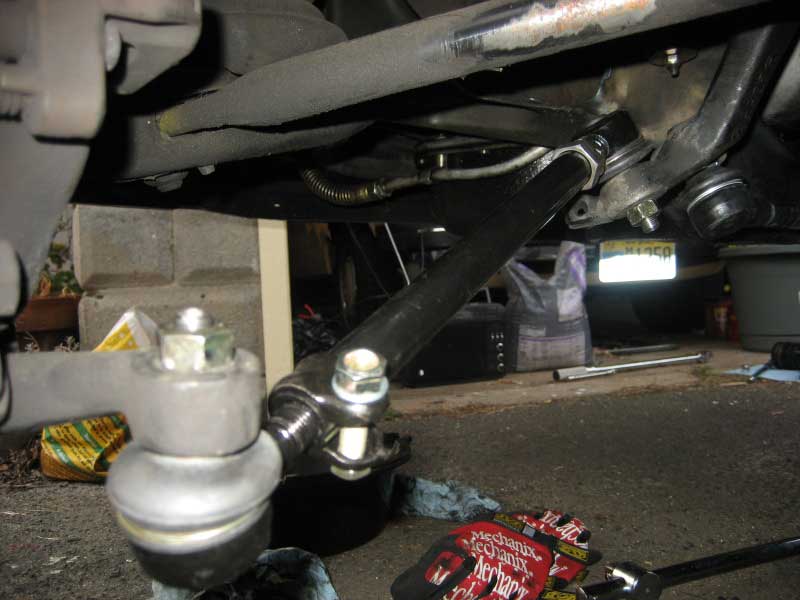
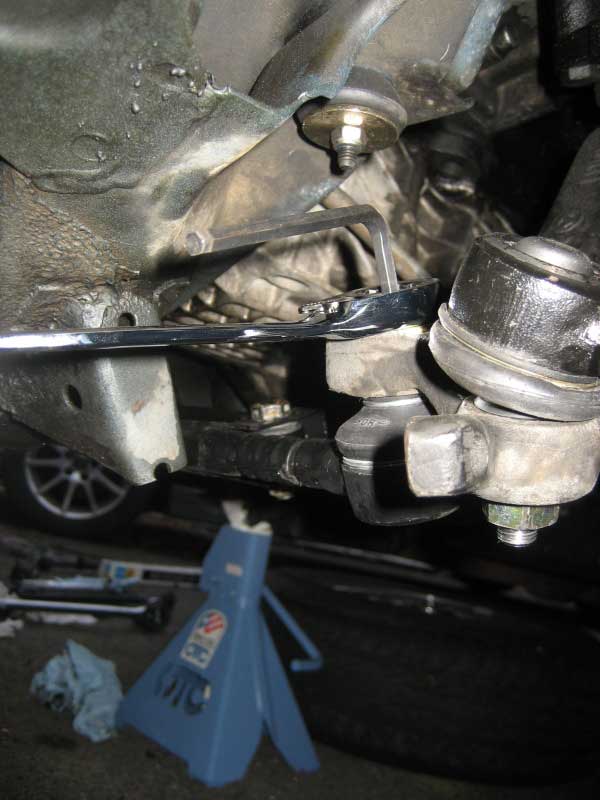
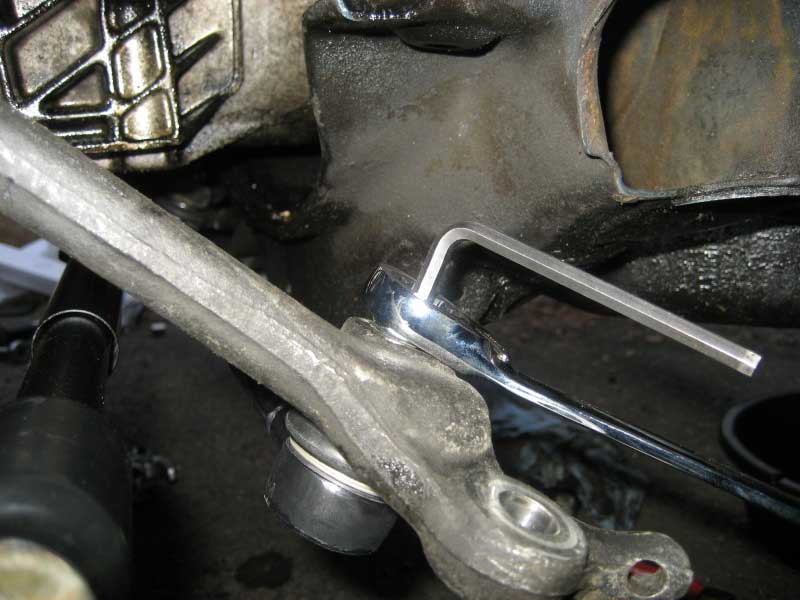

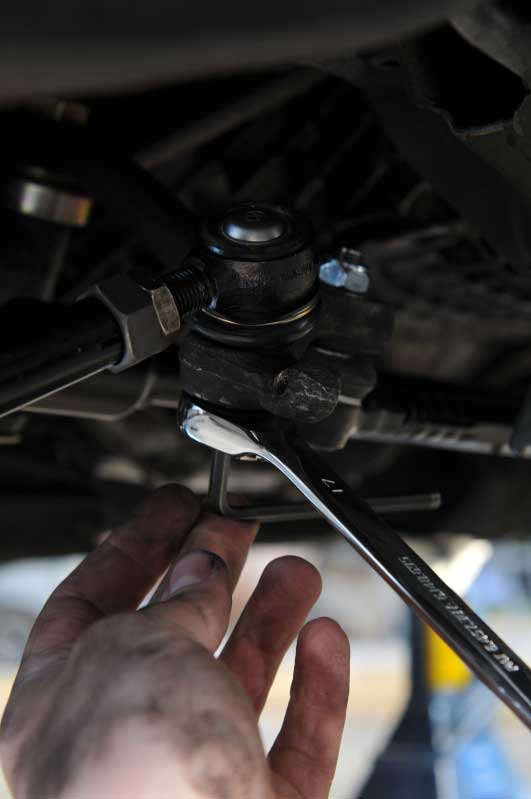
Dont forget to torque down the clamps and locknuts that hold the tie rod ends together.
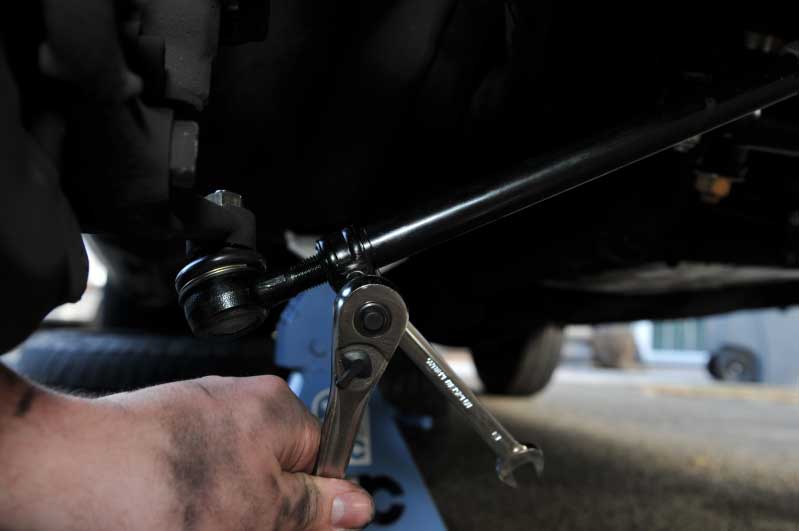
Recheck everything for torque, reinstall and torque wheels and then go for an alignment. Done!
Discuss this DIY here.
-JHZR2
CategoryDiy